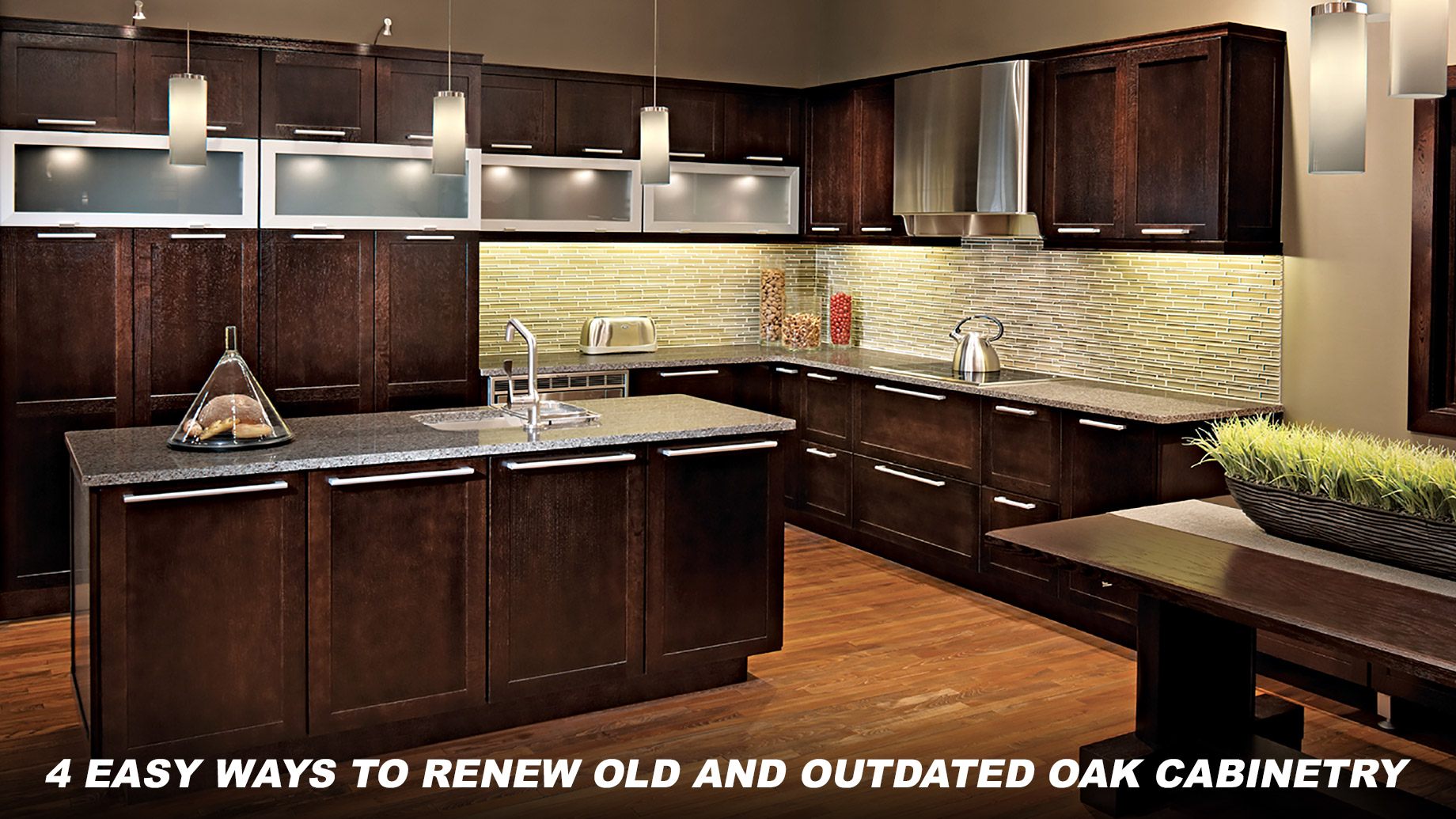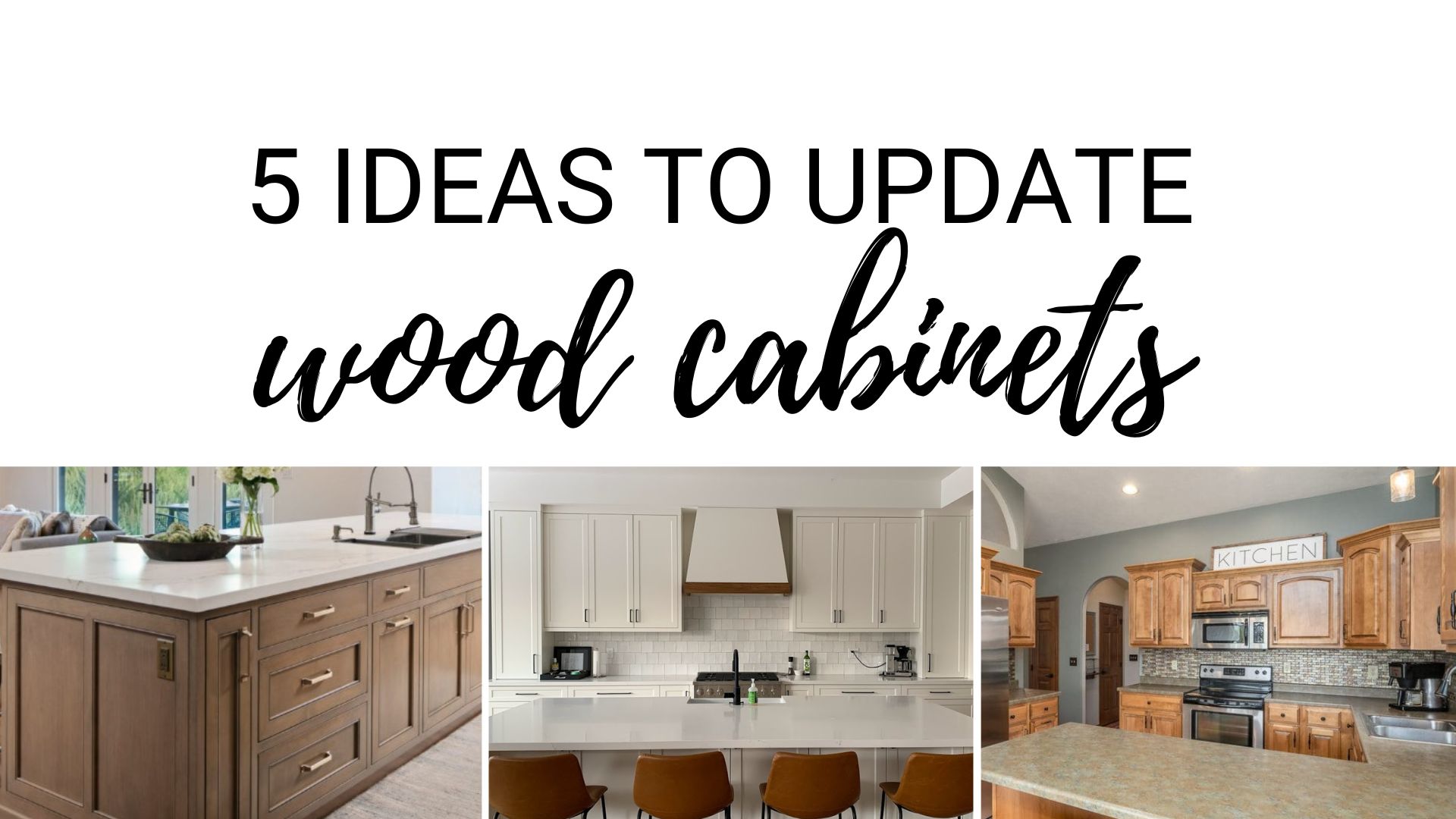Transforming Old Oak Cabinets

Repainting old oak cabinets can dramatically update a kitchen or bathroom, offering a cost-effective alternative to replacement. Success, however, hinges on meticulous preparation and the selection of appropriate materials and techniques. This section details the crucial steps involved in transforming these sturdy pieces.
Cabinet Preparation
Proper preparation is paramount for a durable and aesthetically pleasing finish. Neglecting this stage often leads to peeling paint and an uneven surface. The process involves three key steps: cleaning, sanding, and priming. Thorough cleaning removes grease, grime, and old wax buildup, ensuring optimal paint adhesion. Sanding smooths the surface, creating a better foundation for the primer and paint. Priming acts as a barrier, preventing the wood’s tannins from bleeding through and promoting even paint coverage.
- Cleaning: Begin by removing all cabinet doors and hardware. Use a degreasing cleaner, such as TSP (trisodium phosphate), following the manufacturer’s instructions. Rinse thoroughly with clean water and allow to dry completely. A clean, lint-free cloth is essential for this stage.
- Sanding: Start with a coarser grit sandpaper (around 120-grit) to remove any imperfections or raised grain. Gradually move to finer grits (180-grit and then 220-grit) for a progressively smoother surface. Always sand in the direction of the wood grain to avoid scratches. Use a sanding block for a more even finish, especially on flat surfaces. For detailed areas, consider using a sanding sponge. After sanding, wipe down the cabinets with a tack cloth to remove dust.
- Priming: Apply a high-quality primer specifically designed for wood cabinets. This will seal the wood, prevent bleed-through, and provide a better surface for the topcoat. Use a brush or roller, applying thin, even coats. Allow the primer to dry completely according to the manufacturer’s instructions before proceeding to the painting stage. Two coats of primer are often recommended for optimal results.
Paint Selection for Oak Cabinets
Choosing the right paint is crucial for a long-lasting and beautiful finish. Several paint types are suitable for oak cabinets, each with its own advantages and disadvantages.
| Type | Durability | Finish | Application |
|---|---|---|---|
| Oil-based Alkyd Enamel | Very High; durable and chip-resistant | High gloss, semi-gloss, satin | Brush or roller; requires mineral spirits for cleanup |
| Water-based Acrylic Enamel | High; durable and relatively chip-resistant | High gloss, semi-gloss, satin, eggshell | Brush, roller, or spray; easy water cleanup |
| Latex Paint | Moderate; less durable than enamel paints | Various finishes available | Brush, roller, or spray; easy water cleanup |
| Milk Paint | Low; requires a topcoat for durability | Matte or slightly sheen finish | Brush; easy water cleanup |
Applying Paint to Oak Cabinets
Achieving a smooth, even finish requires careful application techniques. For large surfaces, a high-quality roller is recommended, while brushes are ideal for corners, edges, and detailed areas. Thin coats are preferable to thick ones, which are more prone to drips and runs. Allow each coat to dry completely before applying the next. For a truly professional finish, consider using a fine-grit sandpaper (320-grit) between coats to lightly smooth any imperfections.
Painting Cabinet Doors: Managing Hinges and Hardware
Painting cabinet doors requires careful consideration of hinges and hardware. To avoid painting over these components, either remove them completely before painting or mask them thoroughly with painter’s tape. For hinges, consider using a small brush or a toothpick to apply paint to the areas where the hinges attach. Once the paint is dry, reattach the hardware. If removing hardware, carefully label each piece to ensure correct reinstallation. Using a paint tray and smaller brushes for detailed areas will allow for precise and efficient painting. For a professional look, apply light, even strokes, avoiding overlapping brush strokes too heavily.
Design and Style Considerations for Repainted Oak Cabinets

Repainting oak cabinets offers a significant opportunity to refresh a kitchen’s aesthetic, moving beyond the limitations of the wood’s natural grain and color. Careful consideration of design elements, however, is crucial to achieving a cohesive and visually appealing result. The choices made regarding color palettes, finishes, and hardware will profoundly impact the overall look and feel of the space.
Color Palette and Finish Selection
The selection of paint colors and finishes is paramount in determining the final appearance of the repainted cabinets. A range of options exists, each capable of creating a unique atmosphere.
- Classic White with Matte Finish: This timeless choice offers a clean, crisp look, brightening the kitchen and creating a sense of spaciousness. The matte finish minimizes reflections, providing a softer, more understated appearance.
- Soft Gray with Satin Finish: A sophisticated alternative to white, soft gray cabinets provide a calming and elegant ambiance. The satin finish offers a subtle sheen, adding a touch of luxury without being overly glossy.
- Deep Navy Blue with Glossy Finish: A bold and dramatic choice, deep navy blue cabinets create a rich, luxurious feel. The glossy finish adds depth and reflects light, making the space feel more vibrant.
- Warm Cream with Distressed Finish: This option evokes a sense of rustic charm and warmth. The distressed finish adds character and texture, giving the cabinets a vintage or farmhouse feel.
- Two-Tone Approach: Combining two colors, such as a darker shade on the lower cabinets and a lighter shade on the upper cabinets, can add visual interest and create a sense of balance.
Color Scheme Coordination with Existing Décor
Harmonizing the cabinet color with the existing kitchen décor is essential for creating a unified and visually pleasing space. Consider the existing color palette of walls, countertops, and flooring.
For example, a kitchen with warm, earthy tones (beige walls, granite countertops) might pair well with cream or light brown cabinets. A modern kitchen with white walls and stainless steel appliances could benefit from crisp white or gray cabinets. A more traditional kitchen with dark wood floors and rich accents might suit deep navy or dark green cabinets. Understanding color theory – complementary, analogous, and triadic color schemes – can assist in making informed choices. A complementary scheme (colors opposite each other on the color wheel, such as blue and orange) creates high contrast, while an analogous scheme (colors next to each other on the color wheel, such as blue, blue-green, and green) offers a more harmonious and subtle effect.
Hardware Selection and Impact
Hardware choices significantly influence the overall style and feel of the repainted cabinets. Different styles and materials can drastically alter the aesthetic.
- Modern Brushed Nickel: Sleek and contemporary, brushed nickel hardware complements modern and minimalist kitchen designs.
- Traditional Brass: Adds a touch of elegance and warmth, suitable for traditional or transitional styles.
- Rustic Black: Creates a bold statement, ideal for farmhouse or industrial designs.
- Crystal Knobs: Adds a touch of glamour and sophistication, suitable for more formal or ornate styles.
The material of the hardware – metal, ceramic, or wood – also impacts the overall aesthetic. Metal hardware is generally durable and easy to clean, while ceramic or wood options can add a more unique and textured feel.
Visual Representation of a Repainted Kitchen
Imagine a kitchen with soft gray, satin-finish cabinets. Recessed lighting highlights the subtle sheen of the paint, casting a soft glow on the countertops, which are a light-colored quartz. The backsplash is a simple white subway tile, creating a clean and uncluttered look. Brushed nickel hardware adds a touch of modern elegance. Natural light streams in from a large window, illuminating the space and accentuating the warm, inviting atmosphere. A wooden dining table and chairs, with a similar light wood tone to the flooring, complete the look, creating a cohesive and harmonious space. The overall feel is calm, sophisticated, and functional.
Advanced Techniques and Troubleshooting: Painting Old Oak Cabinets

Repainting oak cabinets, while rewarding, presents unique challenges. Understanding common pitfalls and mastering advanced techniques ensures a professional-looking finish. This section addresses troubleshooting common problems and explores techniques for achieving various paint finishes.
Uneven Surfaces, Drips, and Brushstrokes, Painting old oak cabinets
Uneven surfaces, drips, and visible brushstrokes are frequent problems when repainting oak cabinets. These imperfections often stem from inadequate surface preparation or improper painting techniques. Uneven surfaces result from insufficient sanding, leaving behind raised grain or imperfections. Drips occur from applying paint too thickly or working too slowly. Visible brushstrokes are usually caused by using the wrong type of brush, applying paint unevenly, or not using enough paint.
To address uneven surfaces, thorough sanding is crucial. Start with a coarser grit sandpaper (e.g., 120-grit) to remove any imperfections and then progressively move to finer grits (e.g., 220-grit) for a smooth finish. Always sand in the direction of the wood grain. For drips, ensure the paint is properly thinned according to the manufacturer’s instructions. Apply thin, even coats, allowing each coat to dry completely before applying the next. Work in small sections and use a high-quality brush with soft bristles to minimize brushstrokes. A smooth, even application is key to preventing this issue.
Chalk Paint Finish and Two-Toned Effects
Chalk paint offers a unique, matte finish with a slightly distressed look. Achieving this involves applying the chalk paint directly to the prepared surface, followed by light sanding in areas to create a distressed effect. A clear wax or sealant is then applied to protect the finish. For a more durable finish, a topcoat of varnish or polyurethane can be used.
Creating a two-toned effect involves painting sections of the cabinets in contrasting colors. This technique adds visual interest and can be used to highlight specific features. Use painter’s tape to mask off the areas you don’t want to paint, ensuring the tape is firmly pressed to prevent bleeding. Apply the first color, allow it to dry completely, then apply the second color. After the paint is dry, carefully remove the painter’s tape. Remember to apply a final topcoat for protection and to unify the finish.
Comparison of Painting Tools
The choice of painting tools significantly impacts the final result. Different tools offer varying advantages and disadvantages, making the selection crucial for achieving the desired finish.
| Tool | Advantages | Disadvantages | Suitability for Specific Finishes |
|---|---|---|---|
| Brushes | Precise application, good for detail work, suitable for various paint types. | Can leave brushstrokes, time-consuming for large surfaces. | Chalk paint, two-toned effects, detailed trim work. |
| Rollers | Fast coverage for large surfaces, smooth finish with appropriate nap. | Not suitable for detailed work, can leave roller marks if not used correctly. | Solid color finishes on large cabinet surfaces. |
| Sprayers | Fast and even coverage, minimizes brushstrokes, ideal for smooth finishes. | Requires more preparation, can be messy, requires specialized equipment. | All finishes, especially effective for smooth, even coats. |
